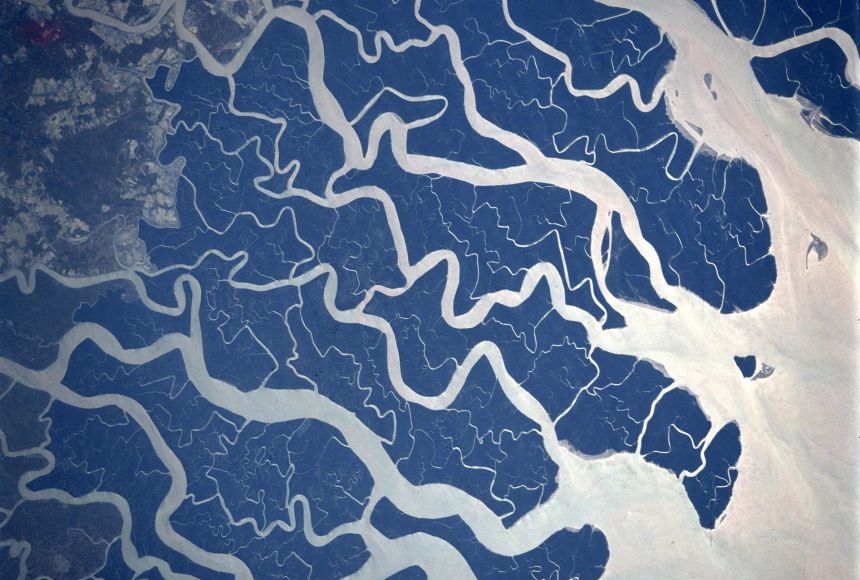ENCYCLOPEDIC ENTRY
ENCYCLOPEDIC ENTRY
Ganges River Basin
Ganges River Basin
The Ganges (Ganga) River is a sacred body of water to Hindus that begins high in the Himalaya Mountains and empties out into the Bay of Bengal. The surrounding river basin has a population of more than four hundred million people.
Grades
5 - 8
Subjects
Anthropology, Biology, Health, Conservation, Earth Science, Geology, Geography, Human Geography, Physical Geography, Social Studies
Image
Ganges River Delta
The Ganges River and its surrounding watershed supports one of the most fertile and densely populated regions on the planet, and its intricate web of waterways offered a stunning view to the crew of the Space Shuttle Columbia on mission STS-87.
Photograph by NASA

Media Credits
The audio, illustrations, photos, and videos are credited beneath the media asset, except for promotional images, which generally link to another page that contains the media credit. The Rights Holder for media is the person or group credited.
Director
Author
Production Managers
Program Specialists
Producer
Intern
other
Last Updated
October 19, 2023
For information on user permissions, please read our Terms of Service. If you have questions about how to cite anything on our website in your project or classroom presentation, please contact your teacher. They will best know the preferred format. When you reach out to them, you will need the page title, URL, and the date you accessed the resource.
Media
If a media asset is downloadable, a download button appears in the corner of the media viewer. If no button appears, you cannot download or save the media.
Text
Text on this page is printable and can be used according to our Terms of Service.
Interactives
Any interactives on this page can only be played while you are visiting our website. You cannot download interactives.